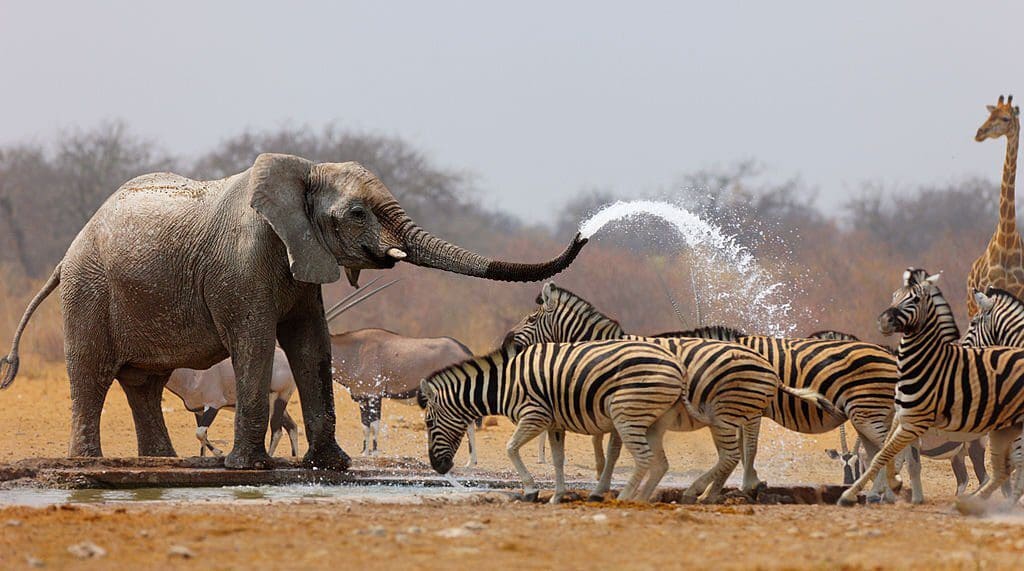Introduction
Wildlife Photography Tips
The beauty of the wild is breathtaking and capturing it through photography can be a truly rewarding experience. Whether you’re a seasoned pro or a budding enthusiast, taking stunning wildlife photos requires more than just a good camera and a steady hand. It takes patience, skill, and a deep understanding of animal behavior. From the majestic African savannah to the lush forests of South America, the world is full of incredible wildlife waiting to be captured on film. But how do you go about it? In this article, we’ll explore some top wildlife photography tips that will help you take your skills to the next level and capture the beauty of the wild like never before. So, grab your camera and get ready to embark on an unforgettable journey to some of the world’s most stunning natural wonders.
Essential Gear for Wildlife Photography
To capture stunning wildlife photos, you’ll need the right gear. Your camera and lenses are the most important pieces of equipment, but there are other items that can make a big difference. A sturdy tripod is essential for keeping your camera steady and reducing camera shake. A telephoto lens is also necessary for capturing animals from a distance without disturbing them. A camera bag will keep your gear safe and organized while you’re on the move. And don’t forget to bring extra batteries and memory cards, as wildlife photography can be an energy-intensive process.
When choosing your camera and lenses, consider the type of wildlife you’ll be photographing. For example, if you’re planning to shoot birds in flight, you’ll need a fast autofocus system and a lens with a long focal length. If you’re photographing nocturnal animals, a camera with good low-light performance is essential. Research the animals you’ll be photographing and make sure your gear is up to the task.
Understanding Wildlife Behavior
Understanding animal behavior is key to capturing stunning wildlife photos. It allows you to predict where animals will be and what they’ll do, giving you a better chance of snapping the perfect shot. Spend time observing animals in their natural habitat and learn their habits and routines. This will help you anticipate their movements and position yourself for the best possible shot.
One important thing to keep in mind is that wildlife can be unpredictable. Always be prepared for the unexpected and be ready to adapt your approach if needed. Remember to keep a safe distance from animals and never disturb them for the sake of a photo.
Finding Wildlife Photography Locations
Finding the right location is crucial for capturing stunning wildlife photos. Research the best places to photograph the animals you’re interested in and plan your trip accordingly. National parks, nature reserves, and wildlife sanctuaries are great places to start. These areas are home to a wide variety of animals and offer plenty of opportunities for photographers.
When scouting for locations, pay attention to the time of day and weather conditions. Some animals are more active during certain times of the day, while others prefer specific weather conditions. For example, bald eagles are more active during the early morning hours, while jaguars are more active at night. Knowing when and where to look will give you a better chance of capturing stunning wildlife photos. Best safari package for Photography
Composition Techniques for Wildlife Photography
Composition is the art of arranging elements in a photo to create a visually pleasing image. When it comes to wildlife photography, there are several composition techniques that can help you create stunning images. The rule of thirds is a basic principle that involves dividing the frame into thirds both horizontally and vertically and placing the subject at the intersection points. This creates a more dynamic and visually appealing image.
Another important factor to consider when composing wildlife photos is the background. A cluttered or distracting background can detract from the subject, so look for a clean and unobtrusive background. This can be achieved by using a wide aperture to blur the background or by positioning yourself in a way that eliminates distractions.

Tips for Capturing Wildlife in Motion
Capturing animals in motion can be challenging, but it’s also one of the most rewarding aspects of wildlife photography. To freeze motion, you’ll need to use a fast shutter speed. A shutter speed of at least 1/500th of a second is usually sufficient for most animals in motion. If you’re photographing birds in flight, you may need to use a faster shutter speed to freeze their wings.
Another important factor to consider is the direction of motion. A photo that captures an animal moving toward the camera can be more dramatic and engaging than one where the animal is moving away. To achieve this effect, position yourself in front of the animal’s path and use a fast shutter speed to freeze the movement.
Shooting in Different Lighting Conditions
Lighting is a critical factor in wildlife photography. Different lighting conditions can create vastly different moods and effects in your photos. Early morning and late afternoon light can create warm and soft tones, while midday light can be harsh and unflattering. Cloudy days can create diffused light that can be great for photographing animals in the forest or under trees.
When shooting in different lighting conditions, be prepared to adjust your camera settings accordingly. Use a low ISO for bright light conditions and a higher ISO for darker conditions. Adjust your shutter speed and aperture as needed to achieve the desired effect.
Editing Wildlife Photos
Editing is an essential part of the wildlife photography process. It allows you to enhance your photos and bring out the best in your shots. Some basic editing techniques include adjusting exposure, contrast, and saturation. You can also crop your photos to improve composition or remove distracting elements.
When editing wildlife photos, it’s important to keep the image as natural as possible. Avoid over-processing your photos and try to maintain the integrity of the original image. Use editing techniques to enhance the photo, not to create something that doesn’t exist.
Ethics in Wildlife Photography
Ethics is an important consideration in wildlife photography. As photographers, we have a responsibility to respect the animals we’re photographing and their habitats. This means not disturbing animals for the sake of a photo and not altering their natural behavior. It’s important to follow local regulations and guidelines when photographing wildlife and to be mindful of the impact we have on the environment.
Wildlife Photography Contests and Communities
Joining wildlife photography contests and communities can be a great way to showcase your work, learn from other photographers, and stay up-to-date on the latest trends and techniques. There are many online communities and forums dedicated to wildlife photography, where you can share your photos and get feedback from other photographers.
Entering contests is another great way to get exposure and recognition for your work. Many wildlife photography contests offer cash prizes, trips, and other rewards for the winners. Some popular contests include the Wildlife Photographer of the Year, Nature’s Best Photography, and the Audubon Photography Awards.
Conclusion
Wildlife photography is a challenging and rewarding pursuit that requires patience, skill, and a deep understanding of animal behavior. By following these top wildlife photography tips, you can take your skills to the next level and capture the beauty of the wild like never before. Remember to always respect the animals you’re photographing and their habitats, and to follow local regulations and guidelines. With the right gear, knowledge, and approach, you can create stunning wildlife photos that will inspire and captivate audiences for years to come. Happy shooting! Let’s go
